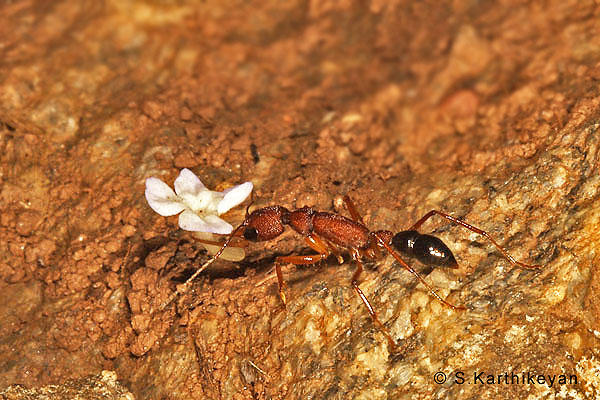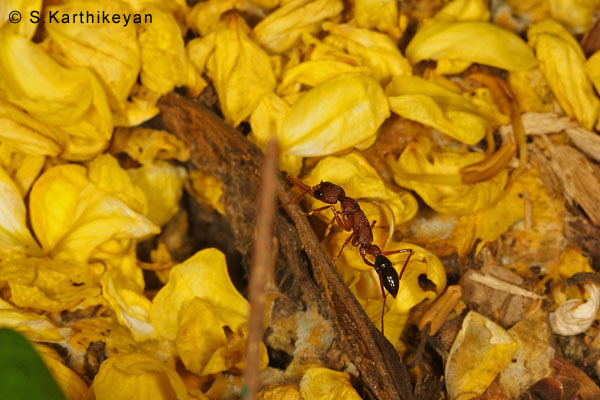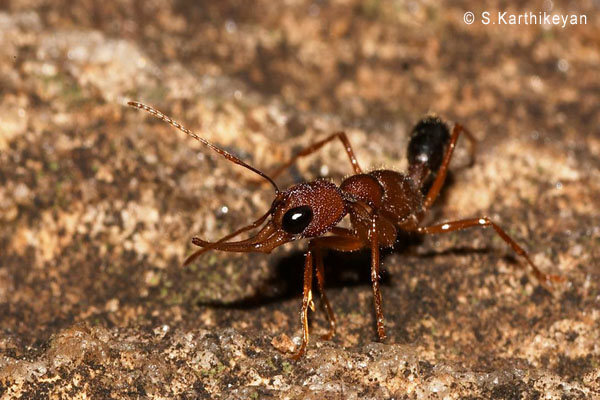It was early winter. The guests staying at the River Tern Lodge had just left for a drive into the jungle. They were very keen on trying their luck with the larger denizens of the jungle. I stayed behind at the campus wanting to try my luck with the little creatures. I was hoping to document photographically atleast some of them. So armed with my camera I rambled about the camp aimlessly looking for anything interesting on tree trunks, under leaves, etc.
During the process of exploration, I did see some spiders that were of interest and also some ant nests. Here, I would like to share just the highlight of the evening. While walking around the bend in the path, I briefly noticed something move in the leaf litter. It kept moving through the maze that the leaf litter had created. Whatever it was, was white in colour. Out of curiosity I sat down to examine it.
As I bent, I again saw the little white thing briefly appear and disappear. But this time, it decided not to show up again. I waited for some action – but nothing happened. I slowly lifted the leaf under which it was last seen and I could not believe my eyes. Iwas staring at a Jumping Ant Harpegnathos saltator, holding between its pronounced mandibles, the flower of Stachyterpheta !

I quickly got a picture of this before the ant again made its way through the leaf litter. Once it started moving, I lost sight of it in the leaf litter. Further searching did not help. However, I was happy with what I had chanced upon. I had in the past only seen Jumping Ants’ nest entrance decorated with coloured petals at Kabini. But this observation came as a treat since I had never seen an ant carrying a flower.

Jumping Ants have very good vision; they have a pair of large compound eyes.

This probably explains why the ant did not appear again when it first saw me close to it. It is thought that this habit of lining the entrance with coloured petals combined with their good vision helps the ants in locating their nests easily. Though for very different reasons, this behaviour can also be seen in the Bower birds.